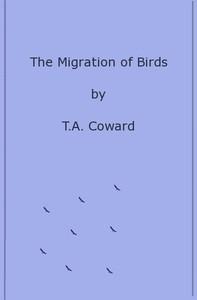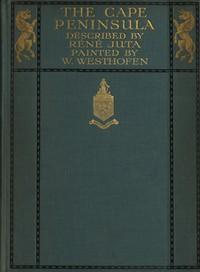|
|
Read this ebook for free! No credit card needed, absolutely nothing to pay.Words: 29678 in 9 pages
This is an ebook sharing website. You can read the uploaded ebooks for free here. No credit cards needed, nothing to pay. If you want to own a digital copy of the ebook, or want to read offline with your favorite ebook-reader, then you can choose to buy and download the ebook. Mr Chapman's remarks about the upward flight of some of the birds are enlightening, for when birds start on oversea journeys they frequently ascend to a great height. Dr Allen and others think that the ascent is to increase the visible distance, but it may also be to reach a zone or stratum of atmosphere in which flight may be more easily accomplished. Robert Service's account of the departure of migrants from the Solway shores, gives suggestion of high flight. They arrive often one by one and "seem to drop literally from the clouds," but when they actually departed it was easy to see their method. They "fly upwards and onwards, then they hesitate, fly sideways once or twice, again attempt an upward and onward flight, hesitate again, and down they come once more to earth." After repeating this manoeuvre several times, "away they go over the sea." One morning he counted sixty blackbirds in one hedge, and others kept arriving, but, however closely he watched, he failed to see whence they came. "They came down from the upper air, becoming suddenly visible, sometimes three at a time." "I saw about a dozen birds thus drop into view, but I quite failed to see any indication of the point of the compass from whence they had come" . G?tke frequently mentions birds raining down from the sky, appearing first as mere specks, and dropping vertically to the island, and others when departing "with breasts directed upwards and rapid powerful strokes of the wings, fly almost perpendicularly upwards." On May 24th, 1911, I watched the departure of a spoonbill from Easton Broad on the Suffolk coast. The bird rose and soared in ever-widening circles until it was a mere speck, even when seen through powerful prismatic glasses; the great stretch of its wings alone enabled me to watch it for so long. When at a great height--I will not guess what elevation--it ceased its circling flight and made straight for the north. In October I saw several flocks of redwings leave the Spurn. They rose to a great height before directing their flight southwards, although the Lincolnshire coast was plainly visible. Great differences of opinion have been expressed about the speed of migrating birds, and here again G?tke's estimates, on account of the weakness of his arguments and his immense presumption, cannot be seriously considered. There are but few measured speeds, and most of these, except perhaps the ducks and geese referred to already, are of birds travelling at low elevations. Allowing this, and also taking into consideration the undoubted fact that birds are frequently held up by strong winds on the shore before starting oversea journeys, is there any proof that they do not actually avail themselves of fairly steady strong winds when they reach the upper air? Mr F. J. Stubbs makes some useful suggestions . He points out that G?tke and others imagine that a bird flying with the wind would suffer inconvenience through the wind ruffling up its feathers. It is surely evident that a bird supported in a moving medium could not progress at any slower rate than that medium; the bird is not flying on one stratum of air with another moving with a different speed immediately above it; it is actually in a current, not on it. If the bird flies at 20 miles an hour, and the wind or moving air is progressing at 10 miles an hour, the bird will cover a distance of 30 miles in one hour, though the force exerted by the bird is the force necessary for 20 miles in a calm. Conversely, if a 10-mile air current meets it, it will unconsciously be carried only 10 miles. If the speed of the bird is the same as the opposing force of the wind, it will remain stationary; I have seen ducks in a blizzard rise head to wind and fly rapidly, making no progress but maintaining their position over the water, to which they dropped again when the storm passed. Some black-headed gulls on the same water did not attempt this manoeuvre, and in a few seconds had vanished down wind. The swimmer, in a swiftly-flowing river, may hold himself in position so long as he can swim at the same rate as the stream he is contending with, but he cannot make headway if the speed of the water exceeds his. He may, however swiftly the stream moves, swim in any direction, but his actual progress will be down stream; if he aims to swim directly across, his real course will be diagonal. The fact that birds fly in any direction in a wind, and when at low elevation pay little heed to the direction of the wind, when the breeze is light, simply means that they can fly faster than the medium they are in; if the medium travels faster than they do, they will be carried in it to their advantage or disadvantage. Even in these days of upper-air investigation we really know very little about the speed, direction and steadiness of upper-air currents, but we do know that at a moderate elevation--some two or three thousand feet--the strength is usually greater than nearer the earth. Mr Abel Chapman, in "Wild Norway," makes this pertinent remark--"Except by aid derived from the operation of physical laws, the nature and extent of which are unknown to me, and by taking advantage of 'Trade-wind' circulation in the upper air, I believe that migration is impossible for short-winged forms of sedentary habits--but that aid, and those advantages, may facilitate, and perhaps vastly accelerate, a process which is otherwise impossible." A warbler flying leisurely, say at 10 miles per hour, in a current of air which was travelling at 20 or more miles an hour, could accomplish the journey across the North Sea--say 300 miles, in ten hours. Allowing much higher rates of speed for strong-winged species, and greater force of wind, some of the marvellous distances covered by migrating birds cease to be mysterious. Prof. J. Stebbins and Mr E. A. Fath made careful calculations from observations with the telescope, and found that birds passed at rates varying from 80 to 130 miles per hour, and these were the minimums, for if the birds were not flying absolutely at right angles with the line of observation, they must have travelled a greater distance in the time occupied between their passage of the observation points . ORIENTATION AND ROUTE FINDING Free books android app tbrJar TBR JAR Read Free books online gutenberg More posts by @FreeBooks
: Pater Paulus: Ivailu yhdessä näytöksessä by Weijola Yrj - Finnish drama@FreeBooksWed 07 Jun, 2023

: The Cape Peninsula: Pen and Colour Sketches by Hansard R N Westhofen W Wilhelm Illustrator - Cape of Good Hope (South Africa) Description and travel; Eastern Cape (South Africa) Description and travel@FreeBooksWed 07 Jun, 2023
|
Terms of Use Stock Market News! © gutenberg.org.in2025 All Rights reserved.






